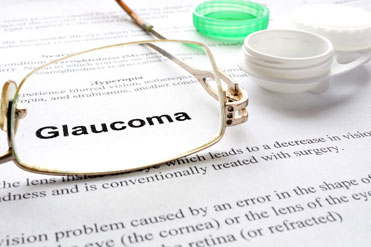
Also known as “the sneak thief of sight”, Glaucoma presents no visible symptoms in its early stages. Once your vision is lost due to this condition then it’s permanent and cannot be restored. The World Health Organization estimates that 4.5 million people worldwide are blind due to glaucoma and in the United States alone, approximately 120,000 are blind from glaucoma, accounting for 9% to 12% of all cases of blindness. There is no cure for this disease yet, but medication or surgery can slow or prevent further vision loss. However, appropriate treatment depends upon the type of glaucoma among other factors. Another vital way to stop the progress of this disease is through early detection.
Types of Glaucoma include:
- Open-angle glaucoma: It causes peripheral eyesight to slowly diminish
- Angle-closure glaucoma: Where pressure on the iris interferes with fluid draining
- Low-tension glaucoma: It actually occurs without elevated pressure on the eye
As mentioned before, if the disease is left untreated, it will eventually cause blindness which would be permanent. So, it’s important to know about such conditions and its prevention methods. National Glaucoma Awareness Month helps to keep people in the know about this disease as not everyone is aware of how easily they can be affected. Eye care organizations use this month to address the risks and provide treatment tips.
With a few self-care tips you can detect glaucoma in its early stages, which is important in preventing vision loss or slowing its progress. The tips are:
- Get regular eye check-ups: With regular dilated eye examinations you can help detect glaucoma in its early stages. According to an article from MAYO CLINIC, as a general rule, the American Academy of Ophthalmology recommends having a comprehensive eye exam every five to 10 years if you’re under 40 years old; every two to four years if you’re 40 to 54 years old; every one to three years if you’re 55 to 64 years old; and every one to two years if you’re older than 65. If you’re at risk of glaucoma, you’ll need more frequent screening. Ask your doctor to recommend the right screening schedule for you.
- Know your family’s eye health history: Go for a frequent screening if Glaucoma tends to run in your family.
- Exercise: Talk with your doctor about an appropriate exercise program and do a moderate exercise regularly to prevent glaucoma by reducing eye pressure.
- Use prescribed eye drops regularly: Eyedrops prescribed by your doctor need to be used regularly even if you have no symptoms of Glaucoma because they can significantly reduce the risk that high eye pressure will progress to glaucoma.
- Wear eye protection: When using power tools or playing high-speed racket sports in enclosed courts, try to wear eye protection because serious eye injuries can also lead to glaucoma.